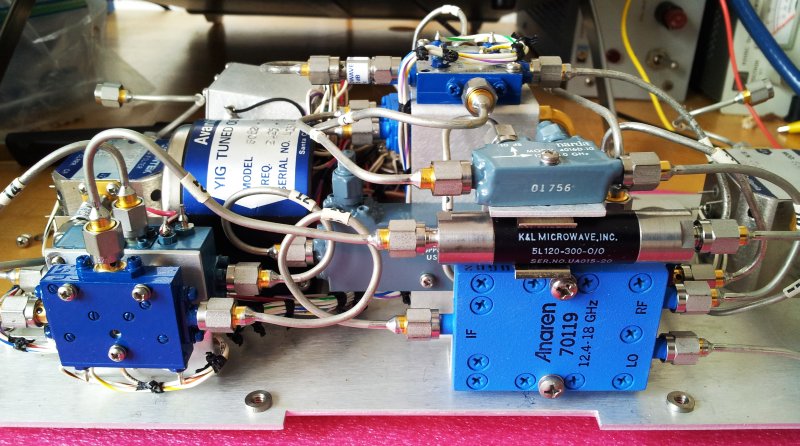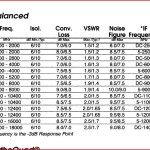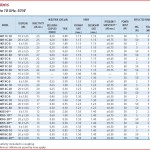With no manuals available, some investigations were carried out to better understand the workings of the MSR-902C microwave tuner, which has a 1 to 18 GHz range, good noise figure, fully-fundamental mixing with 3-stage preselection over the full band. IF output is 250 MHz, so the tuner can be combined with any resonable SDR or other modern receiver, as a down-converter, offering about 40~60 MHz bandwidth, and 60 to 70 dB image rejection, and huge capacity to deal with out-of-band overload signals.
This is the rough scheme, leaving out all ordinary electronics in the case, just the microwave parts (note that there is another SMA attenuator in the feed line of the splitter, coming from the 8-18 GHz YTO, not shown in the sketch).
Essentially, there are two inputs. One covering 1 to 12 GHz, and another one, covering 12 to 18 GHz. The 8 to 18 GHz YTO is used for both bands, and PIN switches are used throughout to route the signals.
The IF goes through a 300 MHz low-pass and a +13 dB monolithic amplifier.
Note that there are some different/earlier versions of the MSR-902 and maybe also MSR-902C which use a slightly different configuration, with a LO doubler. Maybe the could not get proper 8-18 GHz YTOs at the time, at any resonable cost, and had to resort to another topology (using a doubler) for this reason. However, I have never seen any of the earlier tuners, and can only report what I heared about them, with documentation on these units being almost completely absent.
For some of the key devices, see references below. Glad not to show list prices, as these would quickly add up to USD 10 or 20k, for all these microwave parts. Not to mention that these are all US made, most advanced and highest grade components of their kind. Datecodes are from the late 80s, mostly 1988, but still today, there aren’t much other options around to build a tuner of this kind. Maybe there just aren’t enough entities around that can afford such device nowadays, and software and digital signal processing certainly have contributed that todays devices can achieve perfect results even with less expensive, heavy, and energy-consuming parts. Still it is very instructive to study the design of this tuner. It even has a LO sample output, and with some effort, all the YTOs could be phase locked with relative ease (using GeSi dividers, etc).
pin switch american microwave corp SW-2181-3











